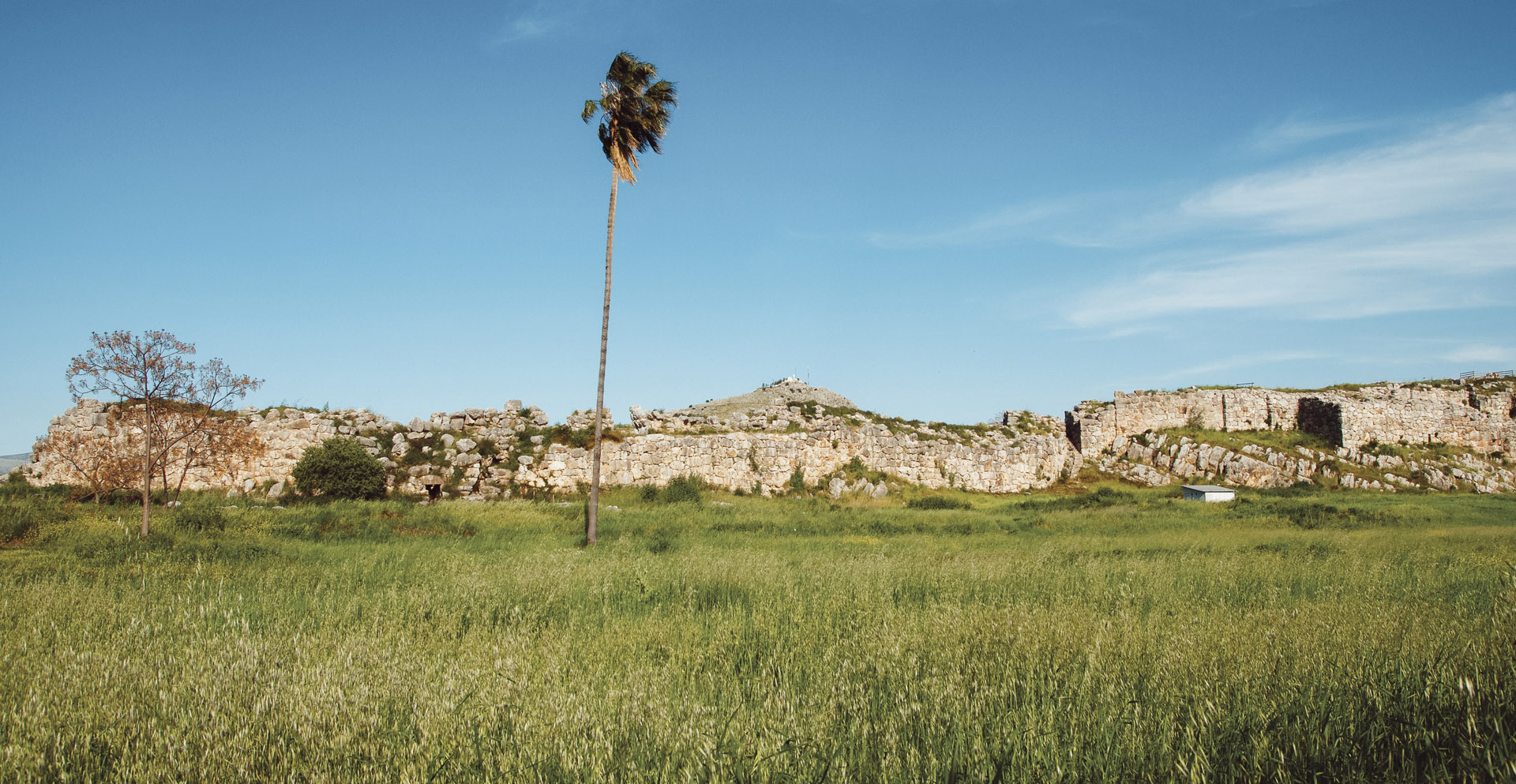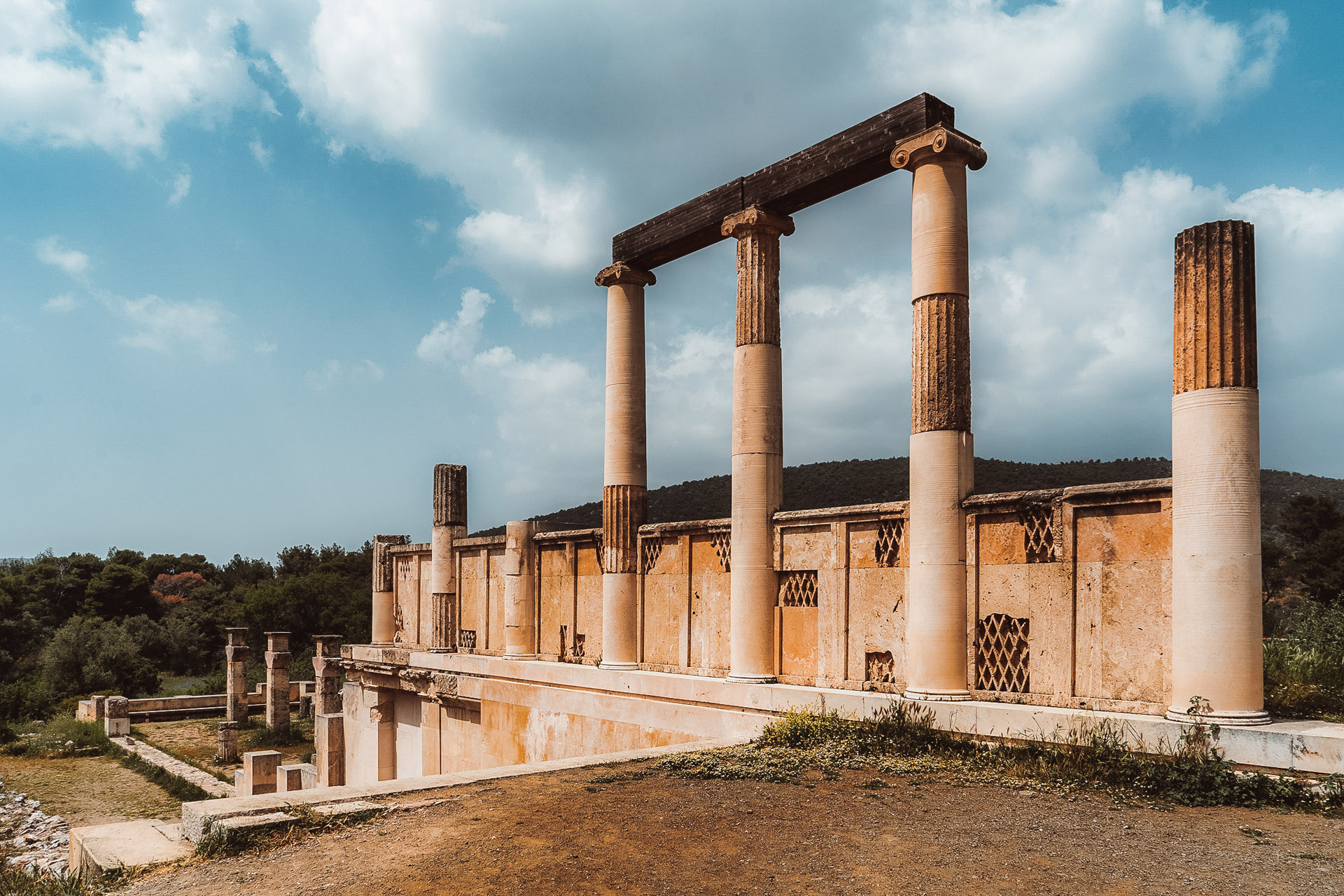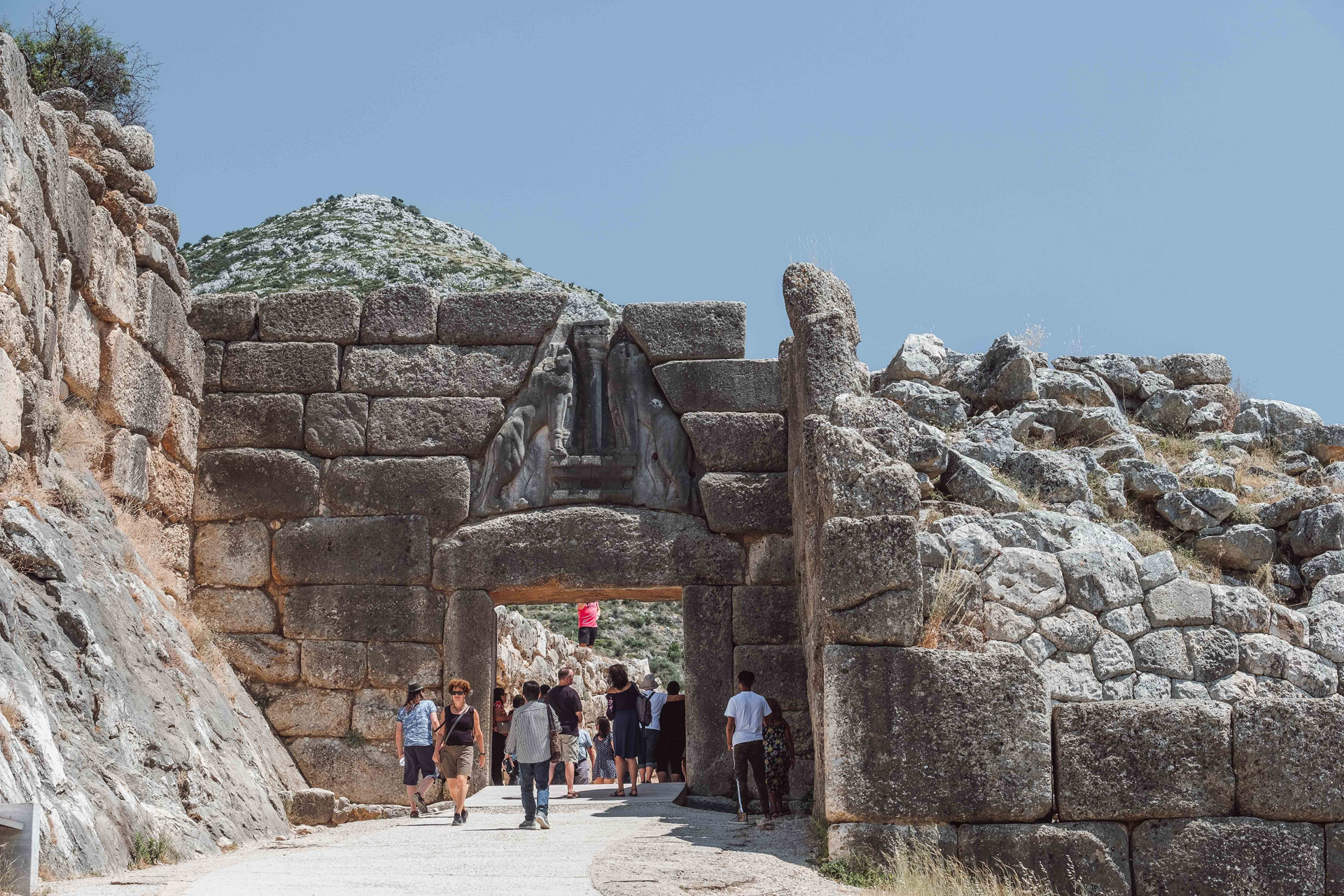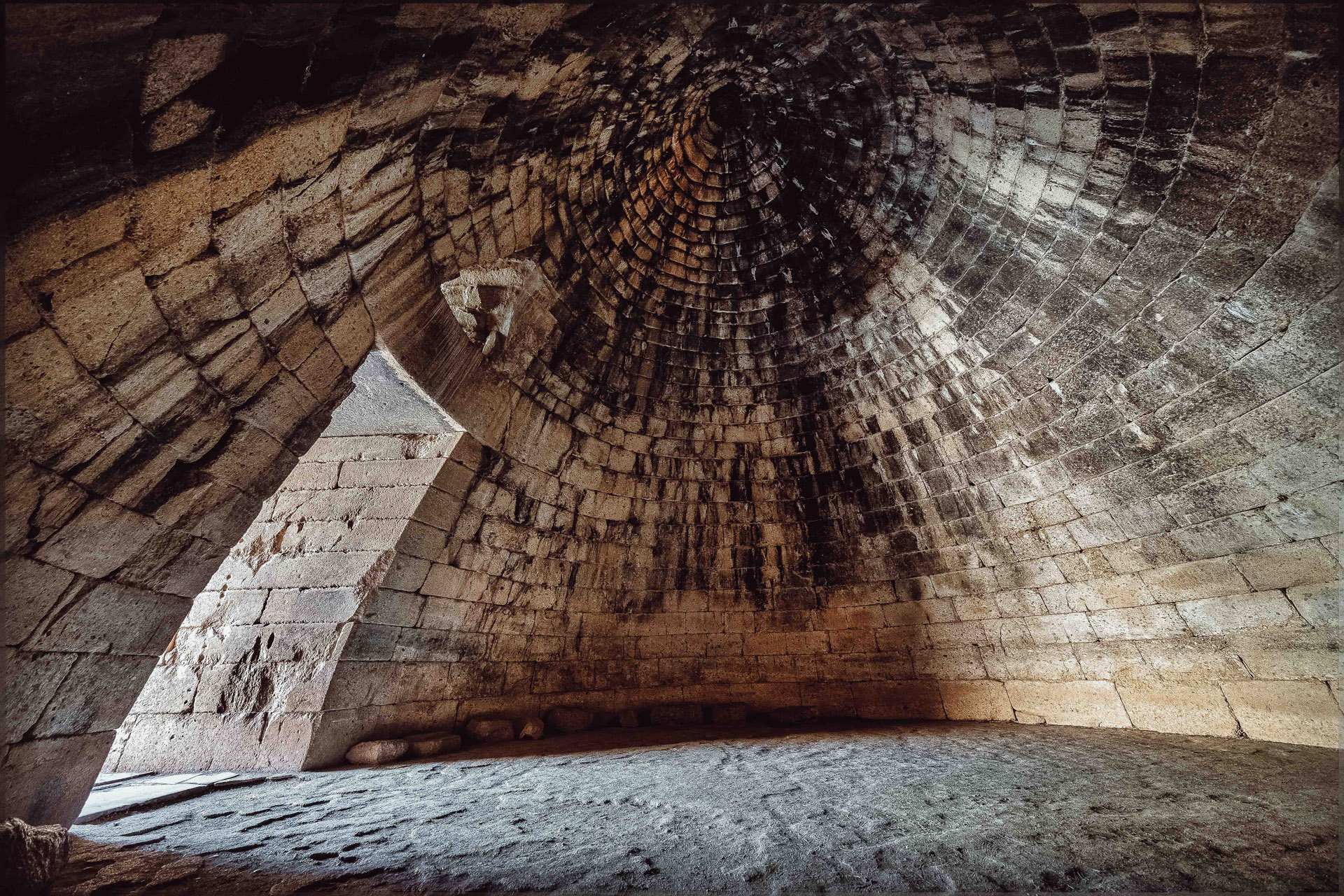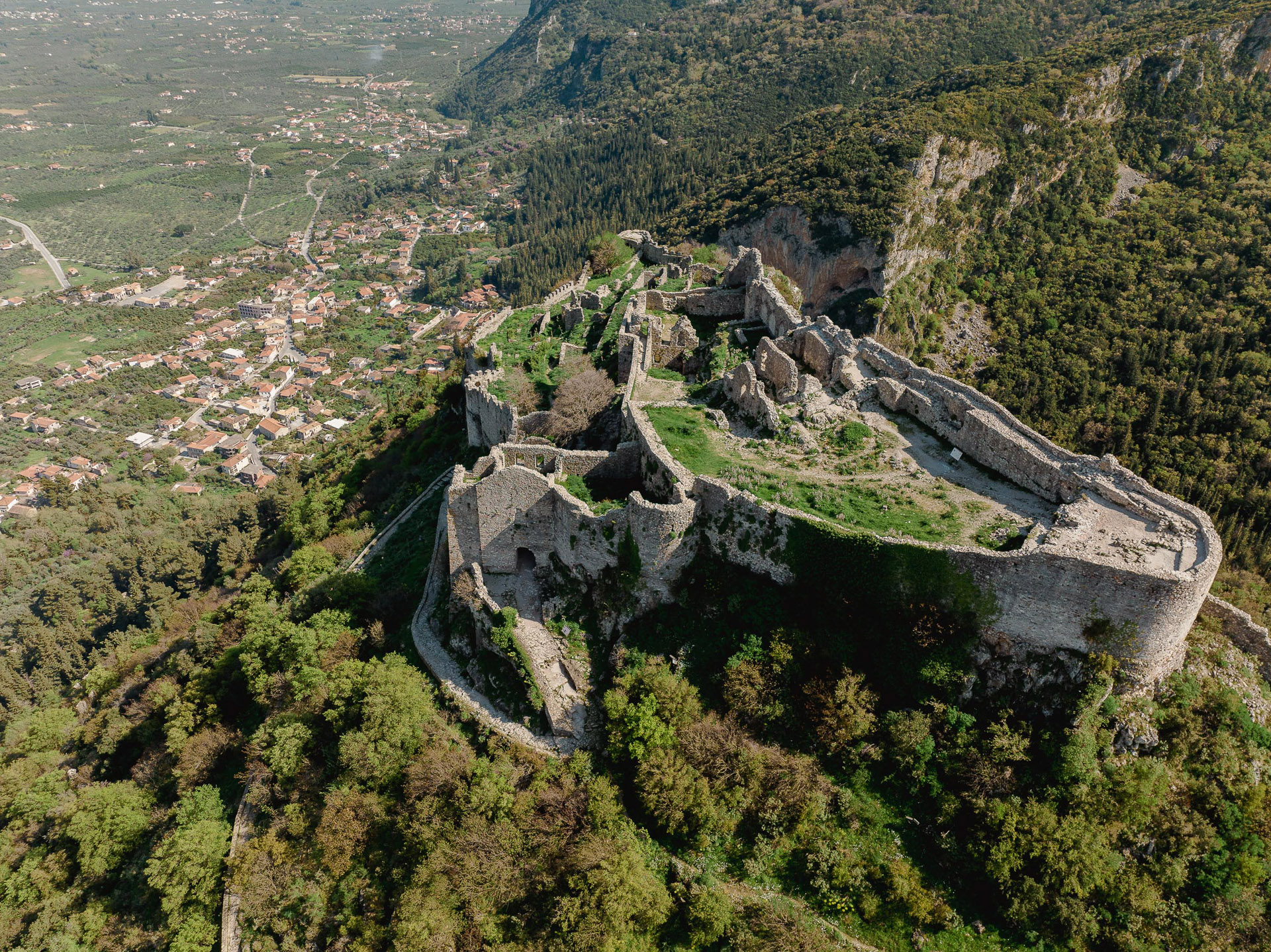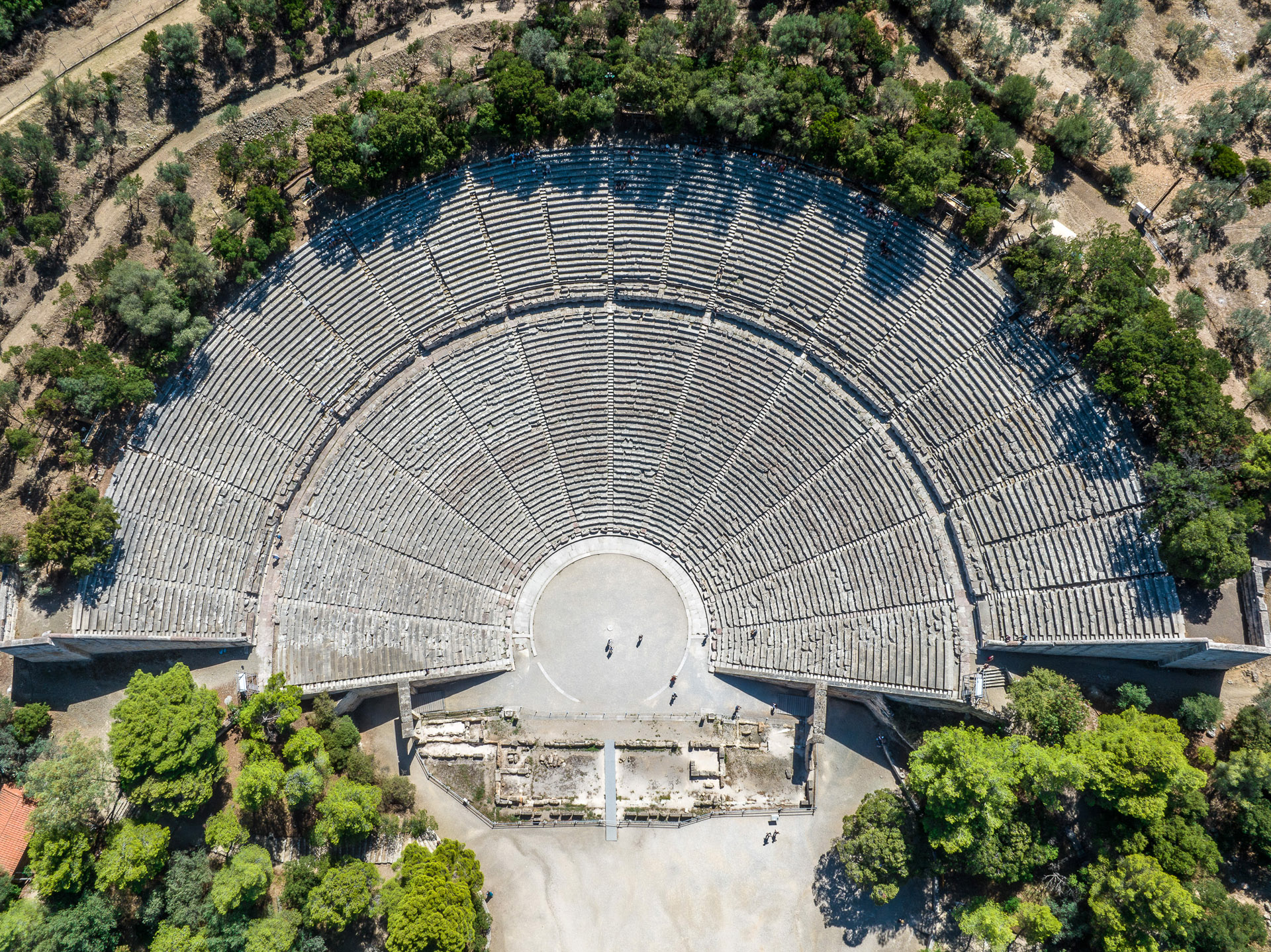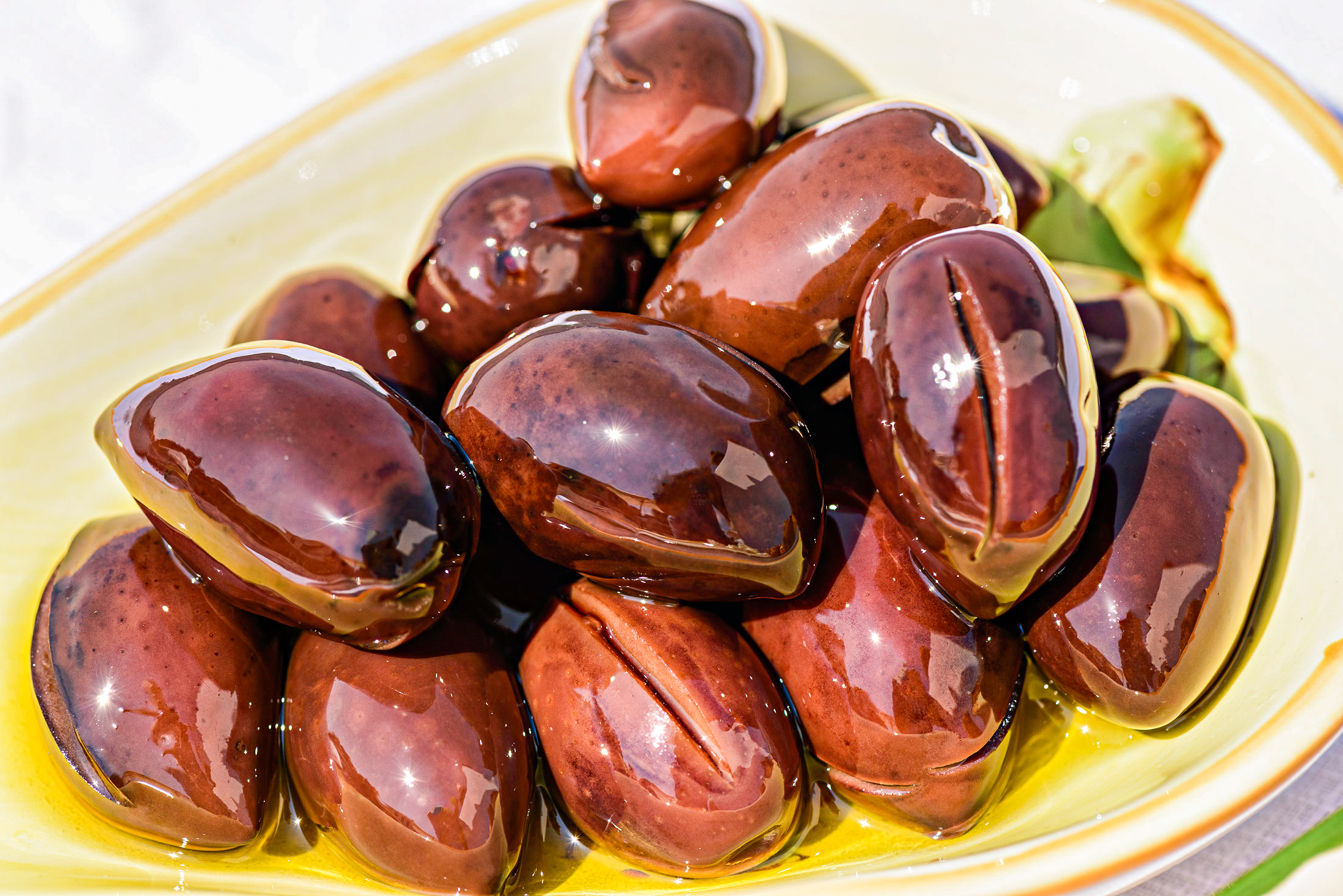UNESCO World Heritage Sites in the Peloponnese
When somewhere has been declared a World Heritage Site by UNESCO you know it really is special. The process isn’t exactly straight-forward as every site has to be nominated, go through several committee stages and then, if it makes the grade, it will be declared a unique landmark, with a cultural and natural heritage that is “considered to be of outstanding value to humanity". But anyone who knows a little about the Peloponnese and its history won’t be too surprised to hear that it is home to no fewer than five World Heritage Sites (one, Ancient Olympia, is in the Western Greece administrative area).
So, without further ado, let’s have a look at the World Heritage Sites in the Peloponnese Region.
Sanctuary of Asklepios at Epidaurus
Many people view the Sanctuary of Asklepios at Epidaurus as the cradle of modern medicine. It was used as a religious healing site as far back as the 2nd millennium BC, and was the place where faith-based healing began to merge with something much more akin to the medicine we know today. The priests began to use herbs, and introduced cleansing and fasting rituals, and eventually even performed surgery – something which has been confirmed by the surgical instruments found at the site.
Asklepios himself was an ancient Greek hero and the god of medicine. Healing temples were built in his honour all over Greece (and elsewhere), but the greatest and most influential of these was the Asklepios at Epidaurus. The sick and wounded would come for miles around, hoping for both physical and spiritual healing at this sacred place, and maybe even to be healed by the god himself.
So what was it like to visit the Asklepios when it was a flourishing, busy sanctuary, known throughout the Greek and Roman world? First of all you would have noticed the number of springs and healing waters in the landscape around the temple. Next, you would have undoubtedly been impressed by the Propyla (entrance) and by the site as a whole with its accommodation, hospital buildings, baths, banqueting hall, stadium and, of course, the famous theatre. The temple took a holistic approach to healing, and so before you were admitted to the sacred precinct you had to complete a cleansing process that included fasting and bathing. When the big day came and you were ready to be healed, you followed the Sacred Way up to the temple itself. The actual healing process took place in the abaton, the innermost sanctuary, which patients were forbidden to enter until they were properly prepared and purified. At this point, the patient would fall into “temple sleep”, that is, sleep that was seen as a type of death. During this temple sleep, if all went well, the god would visit the patient and heal them, or tell the priests what to prepare and administer.
The cult of Asklepios in Epidaurus dates back to the 8th-7th century BC and became fully established in the 6th century BC. Asklepios was often represented holding a stake with a snake wound round it – a symbol still used today by chemists and medics. The sanctuary went through some ups and downs, but by Roman times it was once again at the forefront of contemporary medicine and in the second half of the 2nd century AD the Roman senator Antonius financed new buildings.
As well as being one of the birthplaces of modern medicine, the Sanctuary is also “an eminent example of a Hellenic architectural ensemble of the 4th century BCE,” as UNESCO themselves put it. Or, in other words, the buildings in the site at Epidaurus are masterpieces of ancient Greek art, and are simply beautiful in their own right.
Some of the most interesting remains are:
- The Abaton.
- The Tholos, which had an underground maze beneath it which was believed to be where the god lived. It is a circular peristyle building which was built between 365-335 BC. and is considered to be the most perfect circular building in ancient Greek architecture.
- A large accommodation complex - the Katagoion (late 4th-early 3rd century BC), with 160 rooms for patients and those who were looking after them.
- The Palestra, the Gymnasium, the Conservatory and the Stadium where the games in honour of Asklepios were held.
The Ancient Theatre of Epidaurus
The word stunning is overused, but it’s difficult to think of a better way to describe the ancient theatre of Epidaurus. Yes, it’s beautiful, famous, historical, an architectural masterpiece with amazing acoustics and in complete harmony with its wonderful setting, but all in all – it’s stunning. It is a magical place, and it’s impossible not to feel the pull of history as you walk across the ancient stage and up through the seating, just as people did thousands of years ago. And even those of us who have never before felt moved by geometry will find themselves marvelling at the repeating patterns and the sheer precision of the builders.
In ancient times, drama competitions and athletic competitions were part of the events held in honour of Asklepios and, in an interestingly holistic way, were considered helpful in treating patients. The theatre had a capacity of 12,000 spectators and, famously, the perfect acoustics mean you can hear a pin dropped in the centre of the stage no matter where you are seated.
Since 1955, the theatre has come alive again every year for the Epidaurus Festival where people from all over the world can see plays performed in this unique theatre. And who knows? Maybe the ancient Greek gods drop in from time to time to catch up with modern production techniques – it certainly feels as if the spirit of the ancient Greeks has never left this place.
The archaeological site of Mycenae
The famous Mycenaean civilisation flourished in the Peloponnese, and Mycenae is its outstanding creation. Born of gods and heroes, immortals and mortals, this is a civilisation which will inspire you with its mythology, history and majestic architecture. Ancient Mycenae was a powerful and rich centre during the Late Bronze Age, with its heyday being between 1,350 and 1,200 BC.
Although these magnificent works fell into ruin and were hidden underground for centuries, when they came to light once again, Mycenae looked as if it had never lost its lustre and grandeur. After all, the citadel had been kept alive in the collective memory of people all over the world thanks to Homer’s epics and to the great classical tragedies such as those by Sophocles, Aeschylus and Euripides.
Mythology tells us that Mycenae was founded by Perseus, son of Zeus and Danae who was the daughter of Akrisios, king of Argos. The descendants of Perseus ruled for three generations but when Eurystheus, who was the last in line, was killed without leaving descendants, the inhabitants chose Atreus, the father of Agamemnon and Menelaus, as King. And thanks again to Homer, we all know that Agamemnon led the Greek campaign in the famous battle of Troy.
The story behind how the site was finally uncovered is also an epic tale. The amateur archaeologist Heinrich Schliemann had been fascinated by Homer’s works since he was a young boy and was determined to find physical evidence of this magnificent Mycenaean civilsation. And indeed, basing his efforts on the details given by Homer, Schliemann managed to fulfil his dreams and find Mycenae in 1876.
The monuments. The archaeological site includes the walled citadel at the top of the hill, together with scattered burial and residential complexes outside the walls (mainly to the west and south west).
The main remains are:
- The "cyclopean" walls. According to mythology, Perseus commissioned the Cyclops to build these walls. What we see today are the imposing defensive walls which were put in place in the final phase of construction and which enclose a total area of 30,000 sq.m. The average width of the walls is 5.50 - 6 m, but in some places they are 8 m thick!
- The Citadel and the Lion Gate. The Citadel is almost triangular and was fortified by the cyclopean walls. Its main entrance is the famous Lion Gate, an imposing symbol of the Mycenaean rulers’ power. Although it was built well over 3,000 years ago it still conveys a message of strength and authority, and inspires a sense of awe in anyone who approaches it. If you look up at the sculpture that gives the gate its name, you will see two symmetrical lions facing each other, another symbol of the power of the Mycenaean civilisation. Interestingly, no similar carvings have been found in any of the other Mycenaean citadels, so this appears to be unique to Mycenae.
- Grave Circle A and the "Mask of Agamemnon". This Burial Circle includes six large shaft graves and it was here that the famous and extraordinary "mask of Agamemnon" was found by Heinrich Schliemann. It is the most beautiful of the five golden masks found here, and must have been intended for a ruler or a leader. This one is the only mask that depicts a bearded man with such strong facial features. It is currently exhibited in the National Archaeological Museum of Athens.
- The palace is on the highest point of the Citadel and includes a throne room.
- Burial Circle B. This was found in 1951, outside the citadel and next to the vaulted tomb of Clytemnestra. It is one of the most important monuments on the site, and was useful to archaeologists as they found evidence of the Mycenaeans’ funerary architecture and customs.
The "Treasury of Atreus" (or Tomb of Agamemnon)
This is one of the most important monuments in Mycenae and one of the largest and most perfect Mycenaean vaults to have been discovered. It is beautifully built, and its simplicity of form hides real architectural and building expertise, especially when you remember that it was built between 1350 and 1250 BC! As far as we know, it was used for the burial of an important member of the Mycenaean royal family. When the geographer Pausanias visited in the 2nd century AD, the locals knew the monument as the “Treasury of Arteus” and Pausanias passed this name down to us. As with the Cyclopean walls of Mycenae, the sheer size of some of the stones, particularly the lintels, is breath-taking. The height of the dome is also very impressive, as is the richly decorated facade.
The archaeological site of Tiryns
While not as well-known as Mycenae, this site is still well worth a visit. It was continuously inhabited from the Neolithic era until late antiquity, but it enjoyed its greatest prosperity in the Mycenaean era (1600-1050 BC). The Mycenaean acropolis with its "cyclopean" walls was gradually uncovered from 1876, when it was discovered by Heinrich Schliemann who also discovered Mycenae. In fact, he came very near to destroying ancient Tiryns as he initially thought it was medieval and wanted to dig deeper to find Mycenaean remains. However, he changed his mind and, after extensive excavations in 1884/5, he handed the site over to the archaeological authorities. The finds from Tiryns are on display in the National Archaeological Museum of Athens and the Archaeological Museum of Nafplio.
So, what will you see at the archaeological site? You start your tour at the main gate, which was once as high as the Lion Gate in Mycenae. Next you can see the remains of the famous "Cyclopean" wall with its huge stones. If you go to the Lower Citadel you can walk through residences and workshops, warehouses and sanctuaries and keep an eye out for the defensive Western Bastion which is an excellent example of Mycenaean architecture. Festive and religious events were once held in the palace here, and there was a temple dating from the Geometric period where the goddess Hera was probably worshipped.
The Temple of Apollo Epicurius at Bassae
The Temple of Apollo Epicurius is well off the beaten track at 1,130 m above sea level on Mount Kotilion, something which in all probability is one of the reasons why it has remained in such good condition. It was actually the first site in Greece to be declared a UNESCO World Heritage Site, in recognition of it being “an evocative and poignant testament to classical Greek architecture.”
Since 1987 it has been enclosed in a huge tent-like protective shelter to minimise damage from the weather, but despite this it is still an impressive sight. One of its peculiarities is that it is the first building to combine Doric, Ionic and Corinthian architectural elements, with Doric elements on the outside, Ionic elements in the interior, and columns with Corinthian capitals. Another interesting aspect of the temple is that it combines elements from ancient Greek architecture with later techniques from the classical era.
The temple you can see today was not the first to be built on the site. At the end of the 7th century BC the Phigalians built a sanctuary here which was dedicated to Apollo. This is where the name Epicurius (he who helps) comes from, as Apollo was believed to have prevented the spread of a plague that struck the region during the Peloponnesian War. The existing temple was built around 420 BC and has been attributed to Ictinus, the architect of the Parthenon in Athens.
The first excavations were carried out here in 1812, during the Turkish occupation, by a motley group of antiquarians. At that time, the exquisite Bassae Frieze, a 23 slab, 31m-long, relief marble sculpture masterpiece, was taken from the temple to Zakynthos and was eventually bought at public auction by the British Museum in 1815. The story goes that the frieze was only uncovered because a fox disappeared into a hole in the rubble during the excavations, prompting the archaeologists to investigate further and to catch a glimpse of these outstanding sculptures. Not surprisingly, they started to dig and eventually uncovered all 23 slabs. If you want to see what the frieze looks like, head for the Public Library in the neighbouring village of Andritsaina where there are 23 plaster casts of the reliefs which were given as a gift from the British Museum in 1963. 12 of the slabs depict the battle between the Greeks and the Amazons, and the rest show the battle between the mythical Greek tribe of the Lapiths and the Centaurs.
The Archaeological Site of Mystras
The Castle State of Mystras
UNESCO tells us that Mystras is “an exceptional example of a well-preserved fortified late-Byzantine city”, which is true, but Mystras is also panoramic views, an unrivalled feeling of stepping into the past, a forerunner of the Italian Renaissance and a hill climb - all rolled into one. Glory, majesty, wars and conquests, triumphs and defeats, diplomacy and culture, faith and destruction, abandonment and rediscovery – Mystras has seen it all.
It was arguably the most important Byzantine city in Greece and was founded by the Franks in 1249. But by 1262 Mystras had become a Byzantine city which went on to flourish and to become a royal capital. From 1259 to 1460 the city was ruled by the Palaeologos dynasty, and became a lively centre of the Palaeologan Renaissance. Talk of art, philosophy and education filled the city’s streets in a movement which is considered to have spread to Italy and sparked the famous Italian renaissance. One of the main figures of this movement was Gemistos Plethon who, along with many other thinkers, artists and historians, lived in Mystras. He gave lectures on Plato’s philosophy and wrote about geography, astronomy and history and is acknowledged to have had a significant influence on the Italian renaissance.
The glorious days of the city ended in 1460 when it was surrendered to the Ottomans without a fight by the last Despot, Dimitrios Palaeologos. The castle itself, however, never fell!
The Palace of Mystras. This palace, which is the only surviving Byzantine palace complex in Greece, has been restored so visitors can see it much as the Byzantine Despots and their people would have done. The northern wing was built later and has a mixture of Byzantine and Western architecture with late-Gothic arched windows. The throne room, a magnificent 36 x 10 m hall, was in this part of the palace.
The Church of the Hodegetria. The church owes its imposing arches, aisles and tower-shaped chapels to Pachomios who was the abbot of the Vrontochios monastery in the 14th century. He was determined that Mystras should have a church that would match the famous churches of Constantinople. The tomb of Theodore I Palaeologos who was Despot of Morea from 1383 until his death on 24 June 1407 is in the church.
Agios Dimitrios was witness to one of the final ceremonial acts of the Byzantine empire. It was here that the last Byzantine emperor, Constantine XI Palaeologos, was crowned Despot of Mystras in 1449 and you can see the relief with the double-headed eagle where he stood to be anointed. Later, he left Mystras to go to Constantinople and was killed while fighting on the city’s walls during the Ottoman siege.
The Pantanassa Monastery. While the rest of Mystras is long abandoned, this beautiful monastery is still inhabited by nuns. The magnificent main church was inaugurated in September 1428, and can be seen from all around the city. The frescos are one of the last examples of Byzantine art. If you are lucky, the nuns will welcome you with homemade traditional sweets.
The Archaeological Museum of Mystras. One of the most important exhibits is the 14th century carved marble slab showing the Ascension of Alexander the Great which was on the floor of Peribleptos Church in Mystras. You can also see icons, ceramics, pottery and more.

